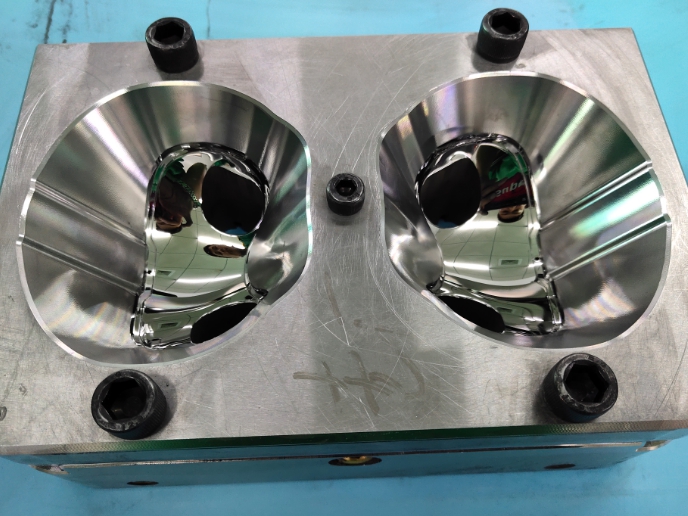Polishing for Casting Dies Achieving Precision and Superior Surface Finish
Introduction
In die casting, the surface condition of a mold is a determining factor for product quality, ejection performance, and tool durability. Polishing is a mechanical surface finishing process that reduces surface roughness and prepares die cavities and cores for high-performance operation. Whether used in aluminum, zinc, or copper alloy casting, proper polishing contributes to minimizing defect rates, improving metal flow, and consistent dimensional accuracy. This process is especially critical in mass production, where hundreds of thousands of shots are expected from each die.
What Is Polishing in Die Casting Tooling?
Polishing is the mechanical removal of microscopic surface irregularities using abrasive tools and compounds. It is applied progressively to achieve a controlled and measurable surface finish. Standard polishing procedures follow benchmarks outlined in ISO 1302 and VDI 3400.
Surface Roughness Standards
Finish Type | Roughness (Ra) | Typical Use |
|---|---|---|
Rough Machined | Ra 3.2–6.3 µm | Non-critical internal tool faces |
Standard Polish | Ra 0.8–1.6 µm | General core/cavity surfaces |
Fine Polish | Ra 0.2–0.8 µm | Ejector pins, cosmetic surfaces |
Mirror Finish | Ra ≤ 0.1 µm | Optical or premium product surfaces |
Die polishing usually involves the use of silicon carbide stones, diamond pastes, and buffing wheels. The exact sequence and tools vary depending on die steel grade and surface requirements. Steels like H13, D2, and P20 respond particularly well to multi-step polishing due to their homogenous microstructure and high hardness.
Benefits of Polishing for Die Casting Dies
Functional Improvement | Description | Impact on Casting |
|---|---|---|
Surface Smoothness | Achieves Ra ≤ 0.4 µm | Ensures clean part release and reduces drag marks |
Defect Mitigation | Eliminates micro-defects and scratches | Prevents cold shuts, weld lines, and flow marks |
Heat Distribution | Promotes uniform thermal conductivity | Minimizes hot spots that cause soldering |
Ejection Efficiency | Reduces adhesion between metal and mold | Extends ejector pin life and lowers rejection rates |
A polished cavity promotes laminar flow of molten metal, improving fill quality. This is especially beneficial in A380 aluminum casting, where highly fluid molten metal demands smooth passage to prevent turbulence-related defects.
Targeted Applications in Casting Die Components
Precision polishing is applied to critical areas where surface quality directly influences tool life and part performance:
Cavity Walls: Ensure smooth surface transfer for high-finish castings
Core Pins: Reduce soldering and friction at high-pressure contact points
Slide Faces: Prevent galling under repeated thermal expansion cycles
Ejector Pins and Sleeves: Minimize part adhesion and sticking during ejection
A polished die contributes to more consistent filling and reduced cycle-induced wear for zinc alloys like Zamak 5, where cycle times are shorter. In copper alloy die casting, polishing is especially important due to the metal's high thermal conductivity and reactivity.
Integration with Surface Treatments and Tool Maintenance
Polishing is typically performed before any surface coating or hardening treatments. This ensures the surface is free of contaminants and micro-irregularities that can interfere with layer adhesion. Common combinations include:
Polishing + Nitriding: Enhances fatigue resistance by creating a clean, hardened layer on a smooth surface
Polishing + PVD Coating: Ensures optimal bonding of TiN, CrN, or AlTiN layers for wear resistance
Polishing + Electroplating: Provides a uniform base for chrome or nickel application to improve corrosion resistance
After 50,000–100,000 shots, die surfaces may require re-polishing to remove residue build-up, minor pitting, or surface fatigue. Neway's post-processing and tool maintenance services include reconditioning schedules that maintain optimal surface integrity throughout the die's lifecycle.
Process Considerations and Best Practices
When polishing is implemented, certain practices ensure consistency and performance:
Use non-directional polishing to prevent flow lines
Apply uniform pressure to avoid rounding sharp edges
Monitor Ra values using profilometers for precision control
Avoid overheating during mechanical buffing (tool steel softening starts >500°C)
Also, tool design should facilitate polishing access. For instance, deep ribs and undercuts should be minimized or designed with modular inserts that can be removed and polished individually.
FAQs
What is the recommended surface roughness for die casting molds?
How often should casting dies be re-polished?
Can polishing be used on hardened die steels like H13 or D2?
What’s the difference between polishing and mirror finishing?
How does polishing affect PVD or nitrided tool coatings?

